One of the many things I plan to do eventually is to put up some graphics of how Pinyin looks in various font faces. A Pinyin pangram would do nicely for a sample text. You know: a short Mandarin sentence in Hanyu Pinyin that uses all of the following 26 letters: abcdefghijklmnopqrstuüwxyz (i.e., the English alphabet’s a-z, minus v but plus ü).
But then I couldn’t find one. So I put the question out to some people I know and quickly got back two Pinyin pangrams.
Ruanwo bushi yingzuo; putongfan bushi xican; maibuqi lüde kan jusede. (57 letters)
and
Zuotian wo bang wo de pengyou Lü Xisheng qu chengli mai yi wan doufuru he ban zhi kaoji. (70 letters)
from Robert Sanders and Cynthia Ning, respectively.
James Dew weighed in with some helpful advice. And, with some additional help from the original two contributors and my wife, I made some additional modifications, eventually resulting in a variant reduced to 48 letters:
Zuotian wo bang nü’er qu yi jia chaoshi mai kele, xifan, doupi.
With tone marks, that’s “Zuótiān wǒ bāng nǚ’ér qù yī jiā chāoshì mǎi kělè, xīfàn, dòupí.”
I suppose xīfàn is not really the sort of thing one buys at a chāoshì. On the other hand, people probably don’t worry much about whether jackdaws really do love someone’s big sphinx of quartz, so I think we’re OK. Still, something shorter than 48 letters should be possible — though pangram-friendly brevity is more easily accomplished in English than in Mandarin as spelled in Hanyu Pinyin. As one correspondent noted:
Most of the “excess” letters are vowels. Trouble is that Chinese doesn’t pile up the consonants much. Brown, for example, takes care of b, r, w, and n, while only expending one little o…. There’s no word like string in Chinese (5 consonants; one vowel). Chinese piles up vowels: zuotian and chaoshi and doufu and kaoji all use more vowels than consonants.
I’m challenging readers to come up with more Pinyin pangrams.
But I don’t want this to be a reversed shi shi shi stunt, so let’s stay away from Literary Sinitic. And I’d prefer the equivalent of “The quick brown fox jumps over the lazy dog” to that of “Cwm fjord veg balks nth pyx quiz.” In other words, wherever possible this should be in real-world, sayable Mandarin.
One possible variant on this would be to use “abcdefghijklmnopqrstuüwxyz” plus all the forms with diacritics āáǎàēéěèīíǐìōóǒòūúǔùǘǚǜ.” (No ǖ — first-tone ü, that is — is necessary.) But that would be even more work.
Those who devise good pangrams will will be covered in róngyào — or something like that.
Happy hunting.
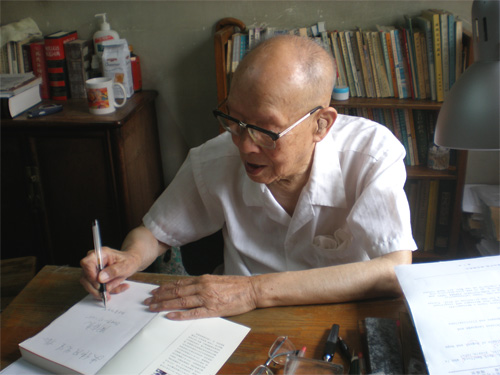

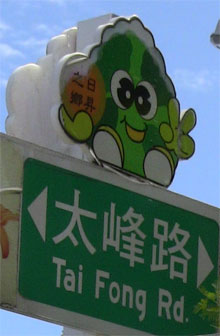 Here are some signs in Taimali Taimali (Tàimálǐ / 太麻里), Taidong County, Taiwan. In all cases of distinctive spellings, they’re in Tongyong Pinyin, even though they should have been replaced by Hanyu Pinyin years ago. When the change to Tongyong Pinyin was implemented, however, signs under national control (e.g., highway signs) were switched relatively quickly throughout the country. This, however, has not been the case with the switch to Hanyu Pinyin, especially in the south.
Here are some signs in Taimali Taimali (Tàimálǐ / 太麻里), Taidong County, Taiwan. In all cases of distinctive spellings, they’re in Tongyong Pinyin, even though they should have been replaced by Hanyu Pinyin years ago. When the change to Tongyong Pinyin was implemented, however, signs under national control (e.g., highway signs) were switched relatively quickly throughout the country. This, however, has not been the case with the switch to Hanyu Pinyin, especially in the south. 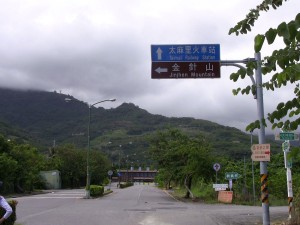
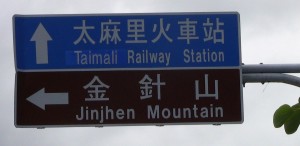
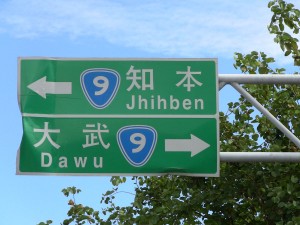
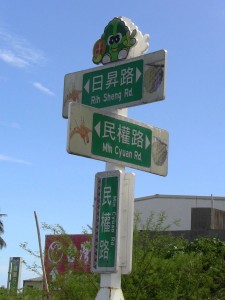
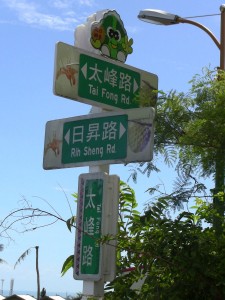
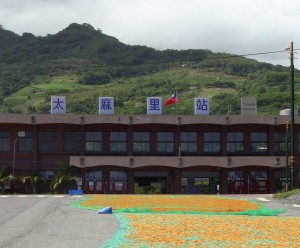
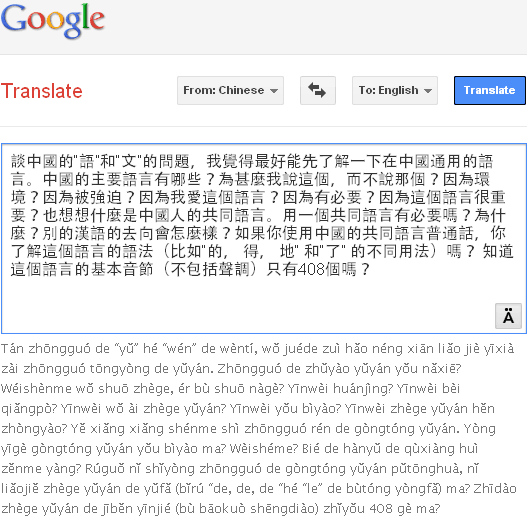
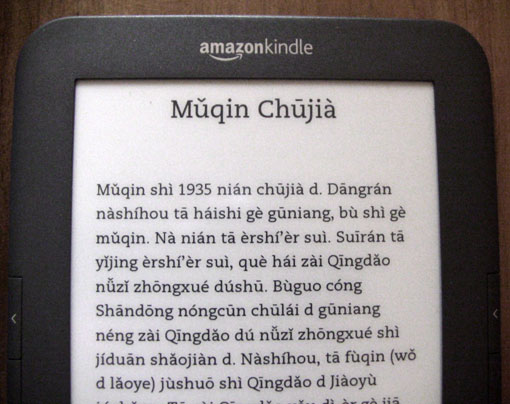

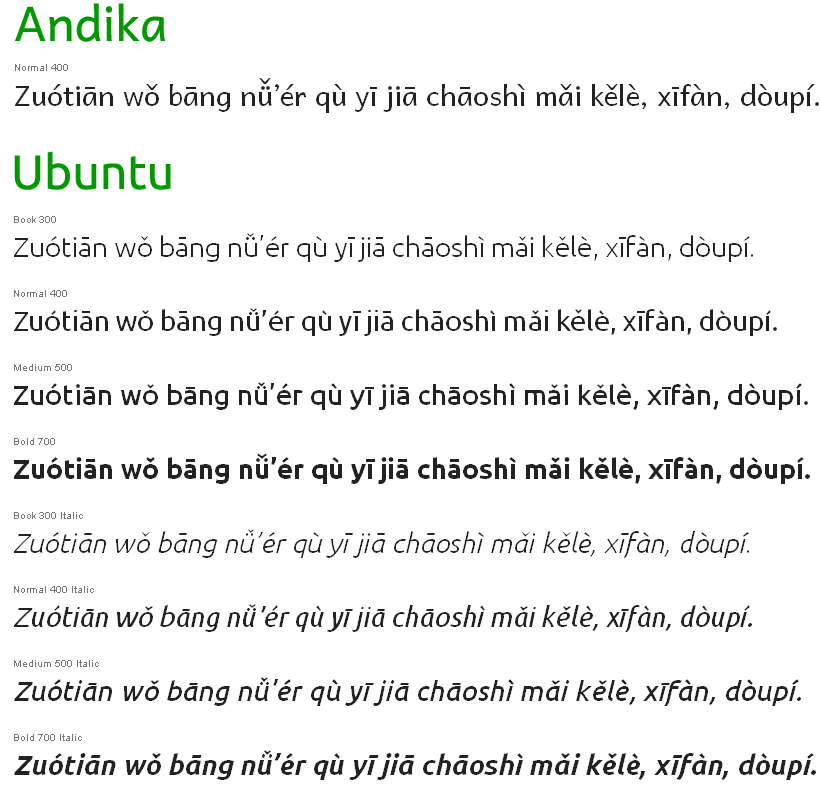
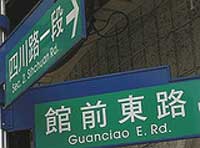 With Taiwan’s presidential election less than six months away and various position papers being issued, perhaps it’s time to take a look at where the opposition stands on romanization.
With Taiwan’s presidential election less than six months away and various position papers being issued, perhaps it’s time to take a look at where the opposition stands on romanization.